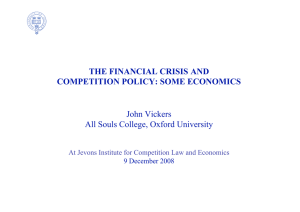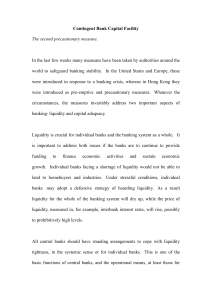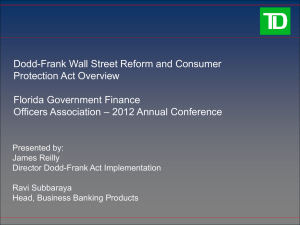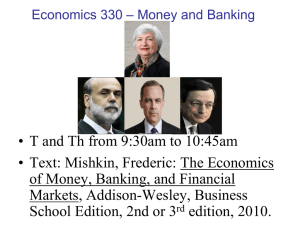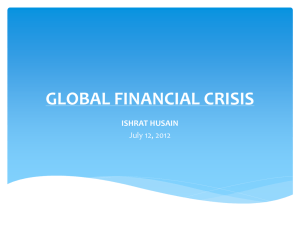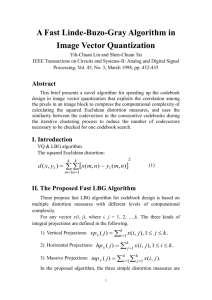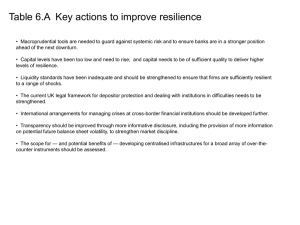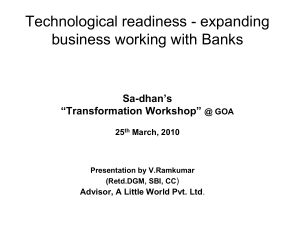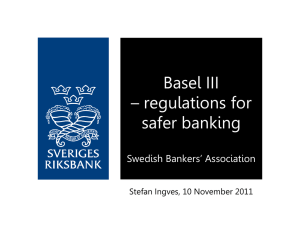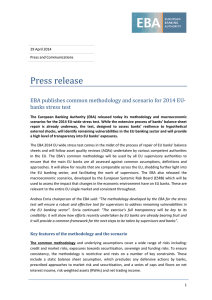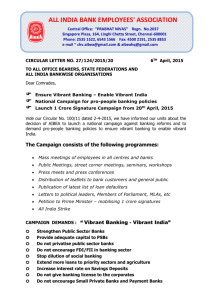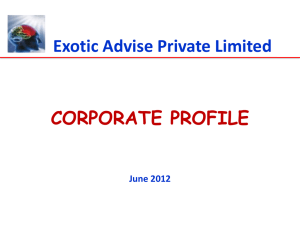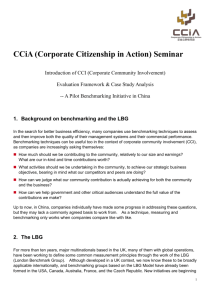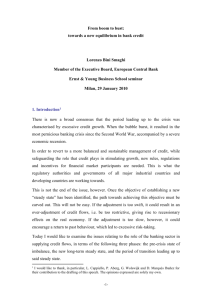See Dominic Morris`s powerpoint slides.
advertisement
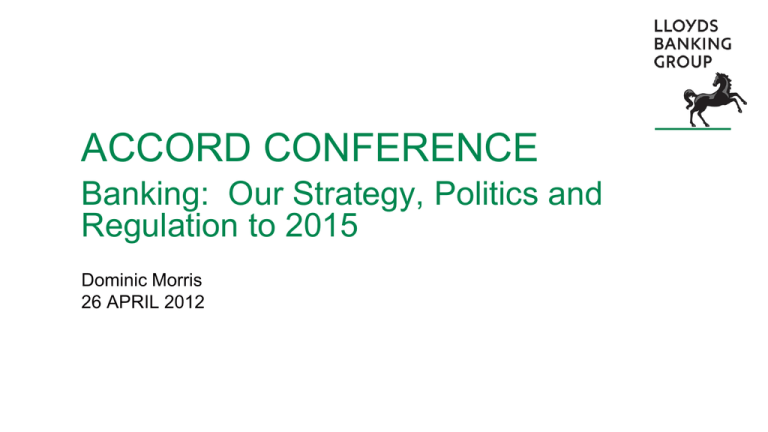
ACCORD CONFERENCE Banking: Our Strategy, Politics and Regulation to 2015 Dominic Morris 26 APRIL 2012 INTRODUCTION How hard to get the message across? Where do you rank banks vs big pharmaceuticals, oil, junk food, alcohol, estate agents, tobacco industry? Very few signs of improvement in 2011 (see next slide) Several banks went backwards Variance in brands. But Lloyds Banking Group closing the ‘negative gap’ (S 09 -22% W 11 -8%) 2 FAVOURABILITY – All MPs • Nationwide are clear leaders with HSBC and Barclays in second place • Favourability towards Lloyds TSB and LBG have increased, but MPs are now less favourable towards Halifax 3 WHY? Lending (not) Bonuses: US attitudes to Capitalism and Scandinavian Puritanism. Misselling General public beginning to feel the pain Characteristics of Balance Sheet Recessions All banks regarded the same i-banks tarnish retail/commercial (some allowance for mutuals) Need to differentiate 4 THE TIDE OF REGULATION Change, Change, Change… Run rate c.420 consultations in 2012 300+ Consultations in 2011 400+ expected in 2012 >80 Consultations in 2003 Source: Lloyds Banking Group data 5 REFORM IS NECESSARY BUT REFORMERS HAVE INCONSISTENT GOALS Crisis had many causes. But search for a ‘single club’ solution Tensions between stability and growth agenda Higher capital/liquidity = less lending capacity Unintended consequences Bail-in + depositor preference = reduction in senior unsecured funding = higher cost of money market funds = dearer mortgages/loans Ring fencing may increase corporate reliance on foreign banks Solvency II rules could knacker UK annuities market Inconsistent rules Vickers vs. Volcker But combination of capital/liquidity, ‘living wills’, governance/ incentive changes, ring-fencing and better micro/macro-prudential regulation will lead to safer banking system 6 THE ICB AND AFTERMATH Higher capital and liquidity Ring-fencing: the “Big Idea” Depositor preference Switching/transparency for competition No change to Verde LBG least impacted of major UK banks (though not negligible) 7 HOW MUCH DOES IT MATTER? WHAT ARE WE DOING ABOUT IT Total reform package costs One-off implementations Ongoing costs Capital/liquidity holding costs £1-2bn for LBG + £500m-£1bn p.a. +40-70% = Lower ROE Running harder to stand still CLOSE Making a Difference CLINCH MULCH Some wins (e.g. FSCS = £500m+ cost avoided for LBG) But banks ‘will only regain respect when (a) taxpayer stake sold (b) balance sheet recession ends = regain our ‘licence to operate’ 8 WHAT WILL CHANGE IN POLITICAL LANDSCAPE TO 2015? “It’s (still) the economy, stupid” Coalition friction 2013 Continued political fragmentation (Con/Lab share of vote 88% 1966, 75% 1979, 65% 2010) Restructuring of the UK? (Scotland Referendum 2014) Increased power of Local Government/elected Mayors Will Labour find its vision (beyond ‘Not the Coalition’) 2015 outcome may be inconclusive 9 HOW WILL OUR STRATEGY HELP? Start with what’s wrong UK retail banking model high cost base Supported by fat revenues from often complex, opaque products with high margins Repeated compliance problems/misselling scandals = Unsustainable - new model needed 10 THE NEW MODEL Low cost, efficient Deliver with scale (large branch networks; investments in technology) Multibrand (the importance of Halifax but also guerrilla brands like BM) Simpler/transparent products Remove misselling risk/multi-billion £ provisions Lower margin but sustainable and profitable for long-term = Happier customers = Repay the taxpayers’ investment 11 CONCLUSION Cost reduction not an end in itself But an essential foundation for new, ethical and sustainable model LBG possibly only major bank in UK that can do this Stable, safe, profitable, responsible bank for industry, individuals, communities by 2015 That’s all folks Questions? 12

